On The Strength Of His Teachings
Although Srila Prabhupada never visited Vancouver,
his followers have firmly established Krsna culture there.
by Visakha-devi dasi

By the inexplicable benevolence of Lord Krsna, for fifteen years I’ve toured Hare Krsna temples intercontinentally, sometimes with Srila Prabhupada, the founder and spiritual master of the Hare Krsna movement, and sometimes, after he passed away, on my own. I’ve seen Srila Prabhupada search for land and buildings to create temples in city and country, tirelessly instruct his disciples in managing and maintaining Krsna conscious establishments, and inspire thousands to come to the temples, live in them, and make them vibrant centers of devotion and spiritual development.
So last summer, when I went to the far reaches of western Canada and for the first time saw the beautiful temple devotees had built there, the huge farm and preaching centers, the school and book distribution program, what surprised me most was that Srila Prabhupada had never been to western Canada to personally instruct the devotees there.
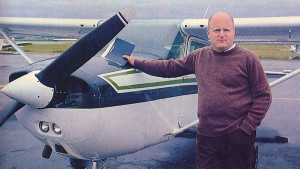
To Bahudaka, the hefty and amiable regional secretary for western Canada’s Hare Krsna centers, that Srila Prabhupada had not come was a cause of great regret. I could understand his feeling, but to me the success of Krsna consciousness in western Canada despite Srila Prabhupada’s never having visited there was glorious evidence of his immense spiritual potency and the sincerity of his disciples. For solely on the strength of Srila Prabhupada’s teachings, his disciples had done so much.
Bahudaka, the son of a former member of the Canadian Parliament, was one of the first in this area to become spiritually inquisitive. Just three weeks after he’d received his B.A. from the University of Victoria (he majored in psychology and philosophy), he and his wife moved to a commune in northern British Columbia. One of the other commune members was chanting Hare Krsna, so Bahudaka and his wife also began chanting.
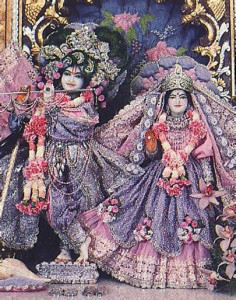
A few months later, in September 1970, he visited the Hare Krsna temple in Vancouver for the first time. The sights and smells delighted twenty-two-year-old Bahudaka, and he felt strong spiritual ecstasy from the kirtana (congregational chanting of the Hare Krsna mantra). Before long he shaved off his beard, and within a year he and his wife were initiated. Two months later Bahudaka became president of the fledgling temple in Vancouver.
Since their neighbors complained about the boisterous kirtanas at the temple, Bahudaka and the ten other devotees had to relocate five times in a year and a half. Finally, in May 1973, they established themselves in a spacious house in an upper-class district. During the five years they stayed there, the community grew to eighty-five devotees, formed an incense business and an elementary school, and increased the daily street sankirtana and literature distribution.
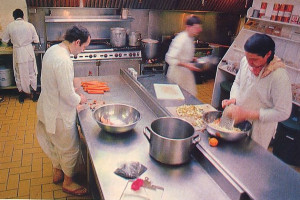
In the years following his initiation, Bahudaka had met with Srila Prabhupada, his spiritual master, at the Los Angeles temple and in India, and he had often thought of inviting him to Vancouver. In 1974 Srila Prabhupada had named the beautiful Deities in the Vancouver temple Sri Sri Radha-Madanamohana and had arranged for Their installation, but he had never seen Them in person. Bahudaka thought that if Srila Prabhupada came, he could take pleasure in seeing the transcendental forms of the Deities, inspire his disciples, and preach to the many interested guests. But Bahudaka also considered how Srila Prabhupada wanted time to do his most important work—translating the Sanskrit scriptures into English—and how he sometimes mentioned that traveling took away from that work. So, out of shyness and a wish to serve his spiritual master’s desire, Bahudaka didn’t invite Prabhupada to Vancouver.
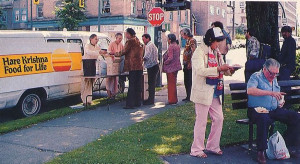
Life program
That’s why many of Srila Prabhupada’s disciples in Vancouver never saw their spiritual master. But as Harilila-devi dasi said, “Although I never saw Srila Prabhupada, I don’t feel like I’ve never seen him. I feel that he’s close to me, helping me.”
It is perhaps this feeling, which other devotees expressed in their own way, that is at the heart of the Vancouver community. Faith in Srila Prabhupada and his teachings propels devotees on. For example, in the spring of 1977, when Srila Prabhupada had fallen gravely ill, Bahudaka and the other devotees in Vancouver wanted more than ever to please him with their service to Lord Krsna.
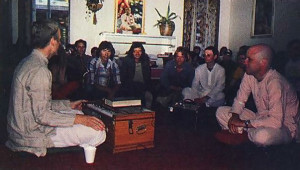
By this time Bahudaka had a cadre of sincere devotees working with him and had developed a cooperative management system: leading devotees had full responsibility in their fields of activity, and a board met regularly to make joint decisions concerning the whole community. The leaders met and decided to begin a marathon to double their distribution of Srila Prabhupada’s transcendental books. And they decided to relocate their now overcrowded temple. The devotees were inspired and worked hard, some distributing their spiritual master’s books, others searching for land for a temple.
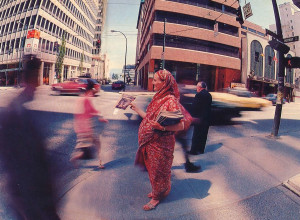
In June 1977 they found an ideal property: eight acres of woodsy land in an area called Burnaby, eleven miles from downtown Vancouver, between two main roads that led to the city. Part of the land was zoned for a church, the adjoining part for residences. The unique plot was just suitable for Sri Sri Radha-Madanamohana’s temple.
Srila Prabhupada passed away in November 1977. In Vancouver, the devotees’ feeling of separation from their beloved spiritual master impelled them to intensify their book distribution marathon, and by Christmas they had doubled the previous year’s total. The temple coffers were full. Within weeks the down payment for the land in Burnaby would be due.

Should they keep the money from the sale of Srila Prabhupada’s books and buy the land for the temple? The leaders met. No, they decided, Prabhupada wanted the money from the sale of his transcendental books to go to the Bhaktivedanta Book Trust (BBT) for printing more books. So the devotees sent the money to the BBT and searched elsewhere for the down payment. Just before the deadline, some Indian gentlemen came forward with the money for the land. Thus Krsna rewarded the leaders’ faith in Srila Prabhupada and their strict adherence to his instructions, and the result of this episode was that the devotees’ faith—both in Prabhupada and in their temple leaders—was strengthened.

In January 1978, ISKCON Vancouver purchased the Burnaby property. At first the devotees hired architects to design a temple, but for four years seemingly endless complications and trouble arose. Finally an Indian devotee-engineer named Kratu dasa joined the temple. With tremendous determination and dedication, he and his wife worked to obtain the necessary building permits from the city. Before long, devotees began coming to build the temple: Om Sharma and his wife, Jyoti, both of whom were devotees, architects, and planners; Rajarsi, a financial wizard; Dyutidhara dasa, a hard-working builder; Bhakta Dave, an electrical genius; and many others. As Bahudaka said, “We faced so many difficulties, but gradually we saw how Krsna assembled a varied and competent crew to build this temple. “The devotees saw the project as a labor of love for glorifying the Supreme Lord and His pure devotee, Srila Prabhupada.

The opening day was Janmastami (the appearance anniversary of Lord Krsna) 1983. To complete the temple on time, one hundred devotees had to work eighteen hours a day for the final three months. Eight thousand people came for the grand opening, including leading members of the Indian community, the mayor of Burnaby, a local legislative assembly member, and Svend Robinson, the area’s member of Parliament. Mr. Robinson addressed the huge gathering:
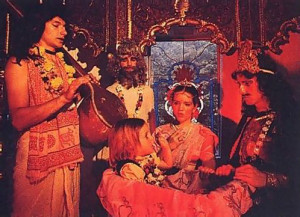
It is an honor for me to be here this evening to indicate not only to the people who are present but to everyone that this temple is a hidden jewel. I say “hidden jewel” because there are many people who do not know of the existence of this temple, and whose only contact with the Hare Krsna movement is the devotees that they see on street corners. And if nothing else, I think it’s important that we take a message out of here today about the strength and diversity of this great community. This temple is a beautiful building, but there is another beauty which transcends the beauty of this building, and that is the rich spiritual beauty of the community here. . . .
At the back of the temple is a statue of His Divine Grace A.C. Bhaktivedanta Swami Prabhupada. I know that the teachings that he espoused are being continued today and that the God consciousness which he imparted will prevail in the months and years to come. … I am delighted on behalf of the people of Burnaby and as your member of Parliament to share in this great moment and to indicate to you that I’m confident that the community will grow and that the God consciousness, peace, and harmony, which are so important and which are exemplified here, will spread throughout our land. Thank you.
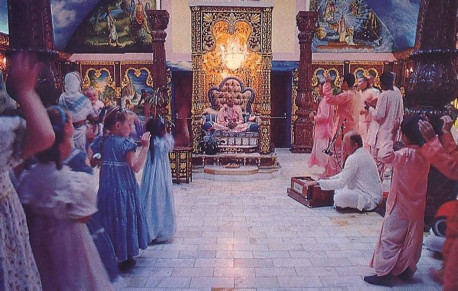
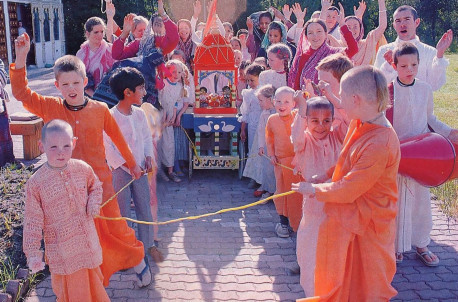
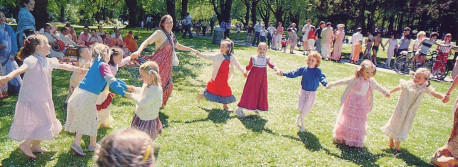


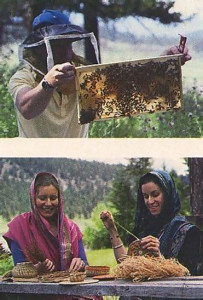
The prime minister of Canada, although unable to attend the opening, wrote the devotees a letter of appreciation and encouragement. “This is a joyous occasion for all people,” he wrote, “regardless of race, religion, or creed.” As part of the festivities, a helicopter hovered overhead, sprinkling flower petals on the assembled crowds. The helicopter was later shown on nationwide TV, along with an interview with Bahudaka, who saw the temple opening as a major turning point for the Hare Krsna movement in western Canada. The TV reporter referred to the opening and the temple as “a very impressive job well done.”
But building a lavish temple for Krsna was only one phase of the devotees’ plans for spreading God consciousness in western Canada. Another phase had already begun, even as the temple was being completed: the purchase of a 1,700-acre farm in a valley of the coastal mountains two hundred miles north of Vancouver.
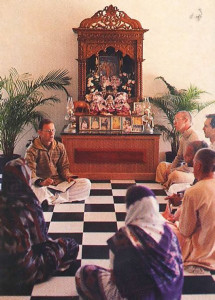
The devotees felt a farm was needed for several reasons. For one, zoning regulations prevented the devotees from building additional residences on their land in Burnaby. As more children filled the school and more devotees joined, there would be no room to accommodate them. But also, more importantly, the leaders wanted to fulfill Srila Prabhupada’s desire for an ideal varnasrama community.
Varnasrama is the Vedic system for a harmonious and progressive society. It’s, based on the principle that individuals, depending on their particular qualities and activities, have different roles to fulfill in making a society successful and complete. The intellectuals are learned and of impeccable character. They advise the administrators, who are charismatic, bold, and resourceful. The farmers, tradesmen, and entrepreneurs provide the necessities for the society, and the laborers assist the others. The leaders in Vancouver envisioned householders buying a parcel of land on their farm, building a house, and peacefully living with their families in a God-centered atmosphere.
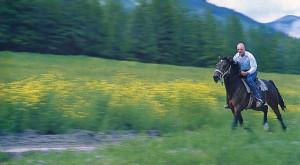
I was eager to see the farm, so early one morning Bahudaka and I, along with his eldest son, Gurupada dasa, began driving north, leaving behind a rainy city that had not yet stirred from the pale of night. We passed verdant fields in Fraser Valley and then followed Fraser River through the range of high mountains that loom over Vancouver. After some time, Bahudaka pointed out how the trees were smaller and the land was drier. The clouds drop their rain in Fraser Valley, he said, and leave the northern regions dry and desert-like. By the time we turned left where a sign that read “Saranagati” indicated our farm, the only vegetation the land offered was dry-looking sagebrush and meager-looking trees. Seeing me apprehensive, Bahudaka explained that two large lakes (one about a hundred acres), fed by mountain streams flowing year round, provide enough water to irrigate the land at Saranagati, and as a result the farm is as lush as Fraser Valley.
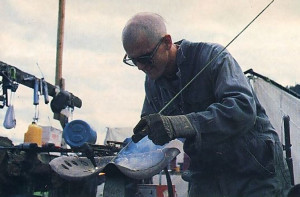
“No hunting,” a sign said as we entered the farm, and then another: “Saranagati Farm, Visitors Welcome.” Saranagati is a Sanskrit word meaning “the path of devotional surrender.” When I first heard the name, I wondered if it meant that one is inclined to surrender at the farm because of isolation from the rest of the world or because of attraction to Krsna through His display of natural beauty there. Once at the farm, I felt that both reasons fit, for when one leaves the materialistic influence of city life, associates with the friendly, hard-working devotees, and relishes the simple, natural lifestyle and breathtaking vistas, one can easily remember Krsna at every turn. And remembering Him is an important step in lovingly surrendering to Him.
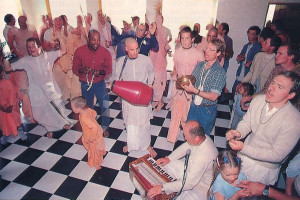
In the future, Bahudaka said, Saranagati’s six hundred forested acres would provide lumber for homes, classrooms, guesthouses, a restaurant, and a temple. Here in this remote corner of the world, those interested in spiritual life could depend on the land, the cows, and the bulls for their necessities. Wherever their interests and proclivities lay—agriculture, construction, cottage industries, teaching, crafts, black-smithing, art, management, animal husbandry, temple worship, and so on—they could become expert in them and delve into them fully.
Tarakanatha dasa, the president of the farm, reiterated this basic plan for its development. “Our original idea is to create a self-sufficient Krsna conscious community where people can see and experience the ideal Vedic lifestyle. Our biggest problem at the moment is simply a lack of manpower. But this is Srila Prabhupada’s vision, and we will try to realize it.”
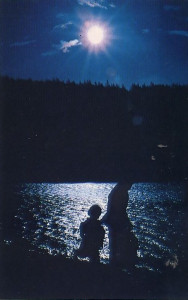
Tarakanatha received initiation from Srila Prabhupada in 1972 but saw him only a few times and never spoke with him. Yet Tarakanatha’s consciousness of Prabhupada and his attraction to his teachings was fresh and dynamic. Every night he sat in the small temple room and read to the other devotees from the Srila Prabhupada-lilamrta (the biography of Srila Prabhupada by Srila Satsvarupa dasa Goswami). Together the devotees experienced the many adventures, struggles, victories, and humorous situations that Srila Prabhupada experienced while spreading Krsna consciousness throughout the world.
Why were the projects in western Canada so centered on Srila Prabhupada and so successful? Each devotee I asked had a different perspective. Lilamrta-devi dasi, for example, a book distributor since 1976, told me that the spiritual masters who came to Vancouver after Srila Prabhupada had passed on—Srila Satsvarupa dasa Goswami, Srila Kirtanananda Swami, and most recently Srila Gopala Krsna Goswami—themselves kept Srila Prabhupada in the center. So the newcomers became as Prabhupada-oriented as the old-timers.
Although she never saw Prabhupada, Lilamrta is one of his sincere disciples. She has served him by consistently following the process of bhakti-yoga he presented in his many books and by associating with devotees—at least when she can. Most of the time Lilamrta travels the length and breadth of western Canada and parts of the U.S., distributing Srila Prabhupada’s books—even to the Eskimos! She told me she’s put books into the post-office boxes of the ten thousand people in the Yukon and the Northwest Territories (everyone in those areas has a post-box, since mailmen don’t go to their homes). “This temple,” she concluded, “runs on kirtana, the prescribed method of enlightenment in this age. Bahudaka enlivens the devotees with his chanting. When he leads kirtana, it’s like fresh rain falling; everything perks up again.”
Dadhi-harta dasa, another disciple of Prabhupada’s, helps support the temple by giving all his earnings as a taxi driver. “The success of the Vancouver temple is Bahudaka himself,” he said. “He’s our source of inspiration, our shelter, and our protection.” Bala Krsna, the headmaster of the school, said likewise: “Bahudaka is the source of stability in our community. He gives us spiritual strength, and everyone likes him; everyone feels good just being around him.”
Between overseeing the activities in the temple, the farm, and the small preaching centers in various cities in western Canada, Bahudaka keeps himself quite busy. But he still finds time to harvest alfalfa and plant wheat at Saranagati, lead kirtanas wherever he is, relax and speak frankly with the devotees, and to play with his seven children. He and the other leaders have recently begun a new construction project: erecting a thirty-foot-high statue of Lord Caitanya on their land in Burnaby, in full view of Marine Way, a road that will soon carry thirty-five thousand cars daily. Next they want to establish a museum on the land, a restaurant, and beautiful garden with fountains. “This will be an intense preaching project in the future,” Bahudaka told me.
But his major interest, his personal delight, is the farm. Why? Because “before he passed on, Srila Prabhupada said that if he stayed longer he would personally develop this varnasrama system on our farms. He didn’t stay with us to do this, but as his disciples we will try to do it for him.” Bahudaka concluded, “There’s not much to be hopeful about in the world these days, but we have a stable community here by Srila Prabhupada’s grace, and we have found a lot to be enthusiastic about.”
I could only conclude that in a higher, spiritual sense, Srila Prabhupada has been to western Canada and is still there today, for as Srila Prabhupada himself said. “The spiritual master lives forever by his divine instructions, and the follower lives with him.”


Leave a Reply